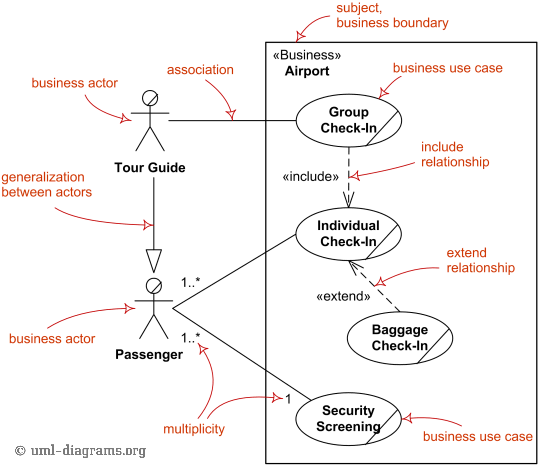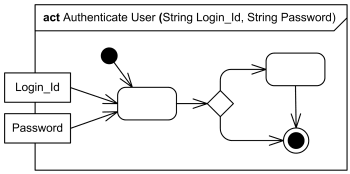Unified Modeling Language
UML or Unified Modeling (Eglish: Modelling) Language [1] is a meta language which uses mainly diagrams [2] to describe a system.
History
The authors of UML are Grady Booch, James Rumbaugh en Ivar Jacobson (The Three Amigo's). They had all three their own specialism which has been standardized in UML.
- Booch had Booch 95,
- Rumbaugh had Object Modelling Technique (OMT)
- Jacobson had Object Oriented Software Engineering (OOSE).
 .
.
Use Case Example

|
Components
There is a slight difference between a use case and a business use case. Same applies to Business Actor and Business boundary. Business can be recognized by the cross line. |
Stereotypes
|
Template
|
Miscellaneous
|
Activity Diagram

|
Components
|
See also
- UML on Wikipedia
- Visual Paradigm.com, Use Case
- Visual Paradigm.com, Activity Diagram.
Reference
- ↑ UML-Diagrams, uml-diagrams.org is an excellent Website with lots of information on UML. The content of this Website is used for this Article.
- ↑ Visual Paradigm, UML-Diagrams.